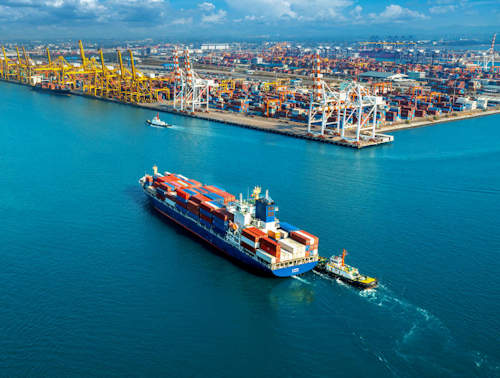The size and pitch are two pivotal factors that captains and shipbuilders alike must carefully calibrate to ensure a vessel’s optimum performance. Let’s navigate this complex topic together.
Propeller Size: A Balancing Act
Propeller size is determined by two measurements: diameter and pitch. Diameter refers to the circle that the propeller blades describe when in motion, while pitch indicates the theoretical distance a propeller would move in one revolution without slippage.
Large propellers, with their greater diameters, can move a significant volume of water, thus generating increased thrust. They’re particularly beneficial for larger ships that require substantial power to get moving and maintain momentum. However, a propeller’s diameter should never exceed the hull clearance – the distance from the hull’s lowest point to the bottom of the propeller. Failing to respect this could lead to cavitation, a damaging phenomenon where vapor bubbles form and collapse on the propeller’s surface, leading to significant noise, vibration, and potential structural damage.
Pitch Perfect: A Key to Efficiency
A propeller’s pitch can make or break a vessel’s efficiency. A high pitch propeller moves forward a greater distance with each rotation but requires more power. It can achieve higher top speeds, making it an attractive choice for vessels prioritizing speed over cargo weight, such as container ships.
In contrast, a low pitch propeller moves forward less with each revolution but requires less power to do so. This makes it better suited for vessels carrying heavy loads, like bulk carriers, where torque and steady momentum are more crucial than outright speed.
Size and Pitch: The Performance Impact
The interplay between propeller size and pitch profoundly impacts ship performance. A poorly chosen propeller can lead to engine strain, increased fuel consumption, reduced speed, and even damage to the ship’s structure due to vibration and cavitation.
On the flip side, a well-selected propeller can maximize fuel efficiency, increase maneuverability, and extend the lifespan of the engine and drive system.
Navigating the Decision
Propeller selection isn’t a one-size-fits-all process. Considerations like hull shape, engine specifications, vessel displacement, and operational requirements must all be factored into the decision. Utilizing propeller sizing software or consulting with marine engineers can greatly assist in making the most appropriate choice.
In the world of commercial shipping, where efficiency and reliability are paramount, the correct selection of propeller size and pitch can be a decisive factor in a vessel’s success. As mariners, we must remember that we’re not just selecting a piece of metal, but choosing a crucial partner for our oceanic endeavors. When chosen wisely, a well-suited propeller is a ship’s silent ally, steadfastly propelling it through the countless waves towards its destination.
